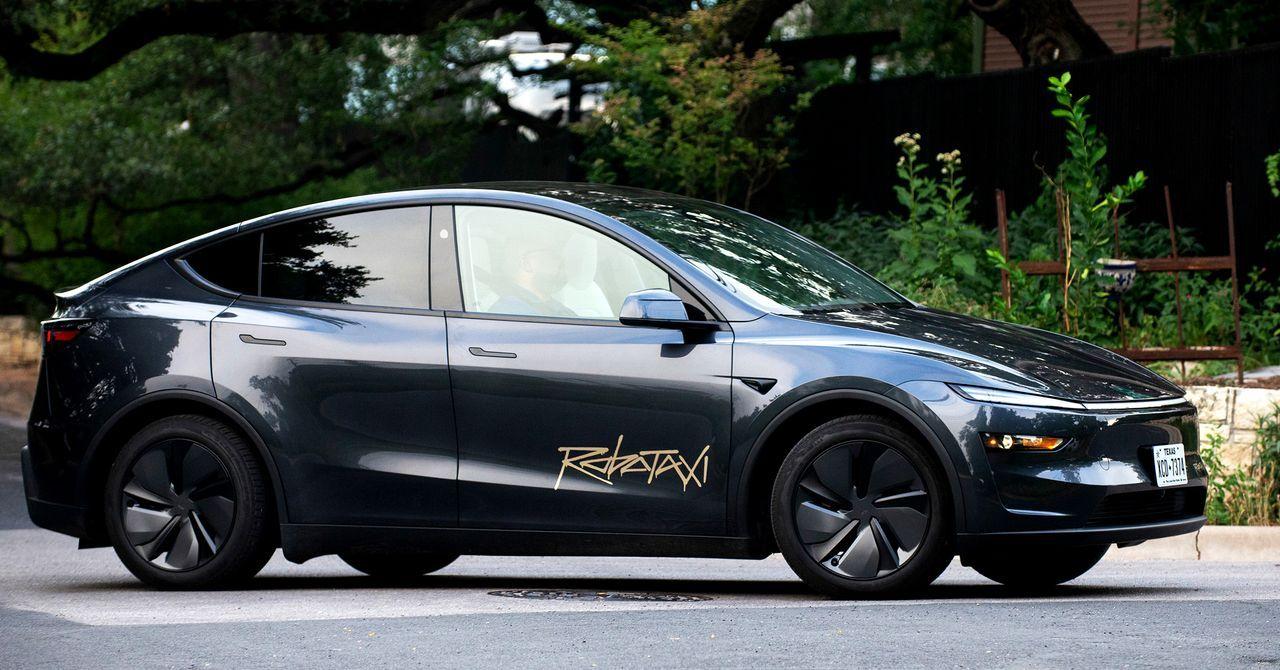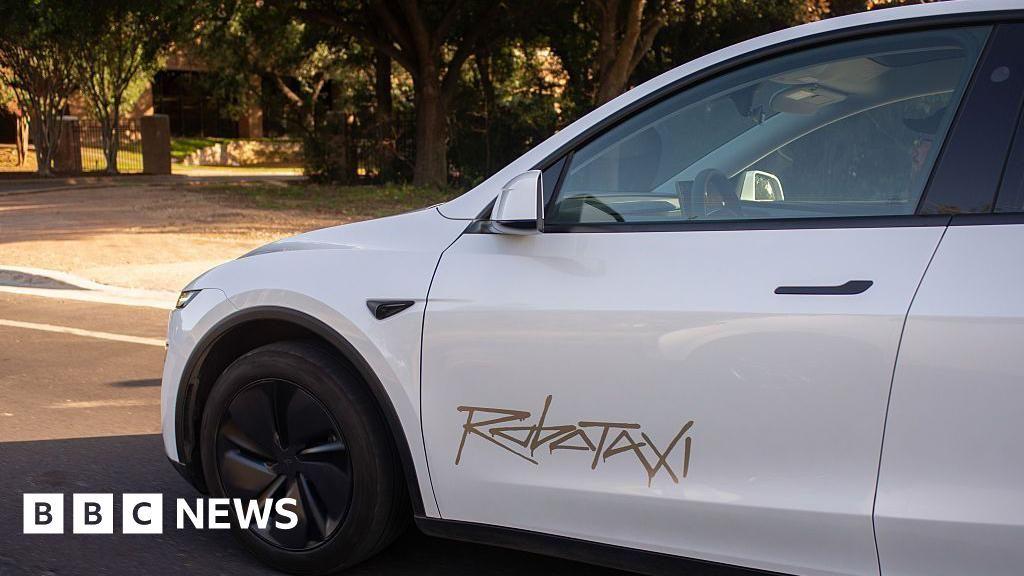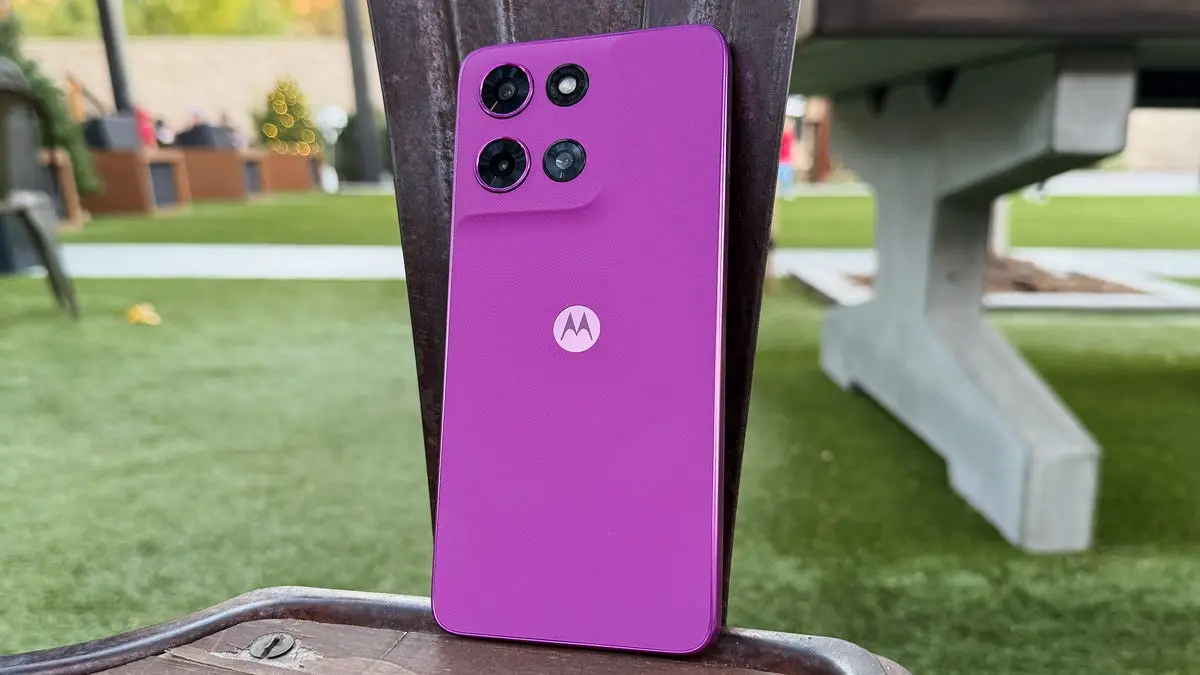Tesla's Robotaxi Rollout: Human Drivers and Regulatory Hurdles
4 Sources
4 Sources
[1]
Tesla Readies a Taxi Service in San Francisco -- but Not With Robotaxis
The electric carmaker informed California that it will operate a limited public taxi service. But it can't legally do this with self-driving cars. Tesla has publicly staked its future on its robotaxis. Now the company is planning to launch a public car service in the San Francisco Bay Area. Tesla is calling it a "robotaxi" service, but legally, this one will have to use cars with human drivers. The plan appears to put the electric carmaker in murky legal waters in a US state with the country's most tightly regulated autonomous vehicle industry -- and where Tesla is already being sued for misleading language around its driver assistance tech. On Friday, a spokesperson for the California Public Utilities Commission, which regulates ride-hailing and taxi services in the state, said that Tesla informed the agency Thursday that it planned to expand an employee-only taxi service to friends and family of employees and "select" members of the public. Technically, Tesla is legally in the clear to launch this sort of service in California: In March, it obtained a "Transportation Charter Party" permit to take Tesla employees on prearranged trips with a driver behind the wheel. But Tesla is not legally permitted to operate an autonomous vehicle-based service there. "Tesla is not allowed to test or transport the public (paid or unpaid) in an [autonomous vehicle] with or without a driver," CPUC spokesperson Terrie Prosper wrote in an email. "Tesla is allowed to transport the public (paid or unpaid) in a non-[autonomous vehicle], which, of course, would have a driver." Business Insider first reported that Tesla told employees that it planned to launch a "robotaxi" service in the Bay Area as early as Friday. On a Wednesday earnings call with investors, Tesla Vice President of AI Software Ashok Elluswamy said Tesla is "working with the government to get approval" to launch in the Bay Area. "Meanwhile, we will launch the service with a person in the driver's seat just to expedite while we wait for regulatory approval," he said. Legally, though, Tesla isn't currently allowed to launch any kind of service with autonomous vehicles, meaning that "person in the driver's seat" will have to be a driver. Tesla does not have a permit to pilot autonomous vehicle technology even with a safety driver, Prosper says, "so it cannot use a drivered [autonomous vehicle] in passenger service." Tesla appears to be talking out of both sides of its mouth here. The company appears to insist to regulators that it is simply operating a taxi service in California, while suggesting to shareholders and Wall Street that the new taxi service uses "robotaxis" and is autonomous. The automaker seems to have used the technique before. It is currently in administrative court with the state of California over allegations that Tesla has misled consumers for years by using language such as "Autopilot" and "Full Self-Driving" to sell technology that can't drive itself, but must be overseen by a human driver at all times. "Tesla couldn't have it both ways," says Philip Koopman, a professor at Carnegie Mellon University who studies autonomous vehicle safety. The automaker "is giving California more ammunition for the false advertising lawsuit by insisting that it's a robotaxi when they're telling regulators it's really not."
[2]
Did Tesla's Robotaxi Launch Backfire?
Survey data shared exclusively with WIRED suggests that Tesla's newest autonomous driving technology has freaked out some consumers. Would you consider a ride in a self-driving car? After hearing a bit about Tesla's robotaxi launch in Austin, Texas, last month, just under half of US consumers wouldn't even think about it, according to survey data shared exclusively with WIRED. Thirty-one percent of the survey's respondents said they're not considering riding one right now. Sixty-five percent said they hadn't even heard about Tesla's robotaxi launch, which includes just a handful of cars and is open only to invited users -- mostly Tesla fans. The cool reception to the launch could be less than ideal for Tesla, which has staked its future on its robotics technology. It gets worse for the electric-car maker. According to a survey, which polled 8,000 US consumers and was conducted by the market research group Electric Vehicle Intelligence Report (EVIR), 42 percent of consumers were less interested in a robotaxi ride after reading an excerpt of Wall Street Journal coverage of the Tesla launch. (The excerpt described the service and noted the potential downsides of Tesla's camera-based technology.) Just over half of those surveyed said they were less convinced that Tesla's robotaxis were safe. Over 30 percent said they strongly believed self-driving taxis should be illegal. (Twenty-four percent said they weren't sure.) Tesla, which publicly disbanded its public relations team in 2021, did not respond to WIRED's request for comment. Tesla CEO Elon Musk will likely be asked by investors about the robotaxi launch, and the public's reactions to it, during Tesla's second-quarter earnings call slated for Wednesday afternoon. The company's path-breaking approach to electric vehicles, and the tech underpinning their design and manufacture, has long made the automaker, its cars, and its mercurial leader Musk an industry lightning rod. For many years, Musk and company were able to translate that flash and noise into sky-high valuations and acclaim. Tesla is still the world's most valuable carmaker, despite accounting for just 2.5 percent of global vehicles sold last year. But Musk's foray into politics -- including a Nazi-like salute executed during President Donald Trump's inauguration, and a months-long stint as the face of the so-called Department of Government Efficiency -- seems to have shifted consumer feelings about Tesla, especially around a former key demographic of affluent liberals. An EVIR survey from earlier this year found that Tesla is now the only EV brand with a negative consumer perception. This spring, Tesla deliveries dropped 13.5 percent. Self-driving tech, and the artificial intelligence and robotics breakthroughs underlying it, was meant to be part of Tesla's salvation. "Really, we should be thought of as an AI robotics company," Musk told investors in April. "If you value Tesla as just an auto company ... fundamentally, that's just the wrong framework. If somebody doesn't believe Tesla is going to solve autonomy, I think they should not be an investor in the company." He's said that work in those areas could make Tesla "the most valuable company in the world by far."
[3]
Tesla Isn't a Car Company Anymore
As its car business falters, Elon Musk is betting the company's future on a high-risk pivot from manufacturing to an AI-driven, autonomous dream. Tesla may be in trouble. Investors and fans will get a clearer picture this Wednesday, July 23, when Elon Musk's carmaker publishes its second-quarter earnings. There is no doubt that the core business is facing significant headwinds. The electric vehicle pioneer is expected to post a 13 percent drop in revenue and a 25 percent plunge in earnings per share. But if you only listen to Musk on the earnings call, you might not even hear the word “car.†Instead, expect a full-court press on robotaxis and artificial intelligence. Tesla recently launched a limited ride-hailing service in Austin, Texas, a move Musk is positioning as the first step toward delivering fully autonomous driving by the end of 2025. Analysts, investors, and the tech media are already spinning it as a breakthrough. But the numbers tell a different story. Tesla’s global vehicle sales fell more than 13 percent in Q2. The expiration of the federal $7,500 tax credit on September 30 looms large. The Trump administration's new "One Big, Beautiful Bill" is killing off the regulatory credits and emissions loopholes that once funneled billions in free cash flow to Tesla. The company’s U.S. advantage is eroding, fast. Analysts at Bank of America, Piper Sandler, and Wedbush are all lowering expectations, citing tariffs, disappointing deliveries, and the end of EV subsidies as major headwinds. While Tesla will still make money from regulatory credits this year, that income stream is shrinking. Without government support or a serious rebound in demand, it is unclear what is left to support the company’s massive valuation, besides AI hype. The disconnect between Tesla’s performance and its perception is stark. Bank of America analysts recently noted that Q2 earnings are “likely to be challenged due to tariffs†and “disappointing deliveries.†It’s the kind of language that would typically send a stock tumbling. Instead, they raised their price target, citing a “more positive noteâ€: the launch of a limited robotaxi service in Austin. That small-scale test, they wrote, gives them more confidence in Musk’s promise to deliver unsupervised full self-driving by the end of 2025. This sentiment is echoed across the financial world. The conversation is no longer about vehicle margins or delivery numbers. Instead, as Wedbush analyst Dan Ives puts it, Tesla's AI initiatives will be "front and center for investors." The earnings call will be scrutinized not for details on the Model Y refresh, but for any insight into Tesla’s investment in Musk’s other venture, xAI, and progress on the autonomous front. The quiet part Tesla doesn’t want to say out loud is this: the EV market in the U.S. is cooling. Prices are too high, charging infrastructure is still lacking, and consumer anxiety is rising. Furthermore, Musk’s close alliance with the Trump administration has turned off many of the progressive buyers who once drove demand. So now, the company is trying to shift its story from selling EVs to selling software; from cars to autonomy; from hardware to hope. Tesla’s valuation is still propped up by belief. The belief that full self-driving is right around the corner. That robotaxis will scale quickly. That Musk can deliver on promises where other automakers and AI labs have failed. But belief is not revenue, and at some point, the fundamentals have to matter. On Wednesday’s earnings call, you will hear about vision-only autonomy, FSD timelines, and “the future of mobility.†You might not hear as much about declining sales, missed delivery targets, or shrinking margins. Investors should listen for what Tesla avoids as much as what it says. Musk will likely reiterate his belief that Tesla will achieve unsupervised full self-driving by the end of 2025. The tech mogul may also use the call to link Tesla more closely to xAI, the startup he founded as a rival to OpenAI. There is growing speculation that Tesla’s infrastructure, data, and talent could be used to power xAI’s development. That narrative plays well with tech investors and distracts from falling EV demand. But hope does not pay the bills. If the robotaxi project stumbles, or if consumers simply lose interest, Tesla may have little left to fall back on. The question now is not whether robotaxis will arrive, but whether they can arrive fast enough to save Tesla’s struggling EV business. What made Tesla successful in the past was a combination of timing, subsidies, and an early-mover advantage. All of those are fading. The company’s new advantage is narrative control. The car business is real. The problems are real. The earnings will tell that story. But does anyone still want to hear it?
[4]
Tesla Rolling Out Robotaxis With Human Drivers in the Driver's Seat, Defeating the Purpose of a Robotaxi
Tesla is planning to follow up on its extremely limited and technical-issues-plagued robotaxi service in Austin, Texas -- with an even more limited rollout in San Francisco. According to an internal memo obtained by Business Insider, Elon Musk's EV maker is looking to accelerate its timeline by rolling out a robotaxi service across a large swathe of the Bay Area, as soon as this week. But there's a Gigafactory-sized caveat: a human safety operator will be sitting in the robotaxi's driver seat, a bizarre concession that shows Tesla is far from feeling confident enough to have its robotaxis actually operate by themselves -- or secure the necessary regulatory approvals. During Wednesday's earnings call, Tesla's head of AI software, Ashok Elluswamy, stated that "we are working with the government to get approval" in the San Francisco Bay Area. But he admitted that "we will launch the service with a person in the driver's seat just to expedite while we wait for regulatory approval." The stakes for the carmaker are incredibly high. As revenues continue to plummet thanks to cratering sales worldwide, Musk is looking to make up for the company's less-than-stellar performance by selling "millions" of humanoid robots and a robotaxi service. But getting anywhere near the point where Tesla "will probably have autonomous ride-hailing in probably half the population of the US by the end of the year," as Musk vaguely promised during Wednesday's call, could prove incredibly difficult. Even its handful of robotaxis in Austin have already been plagued with technical issues, from running stop signs and swerving into the wrong lane to driving twice the speed limit and dropping off passengers in the middle of busy intersections. Alternatively, Tesla may attempt to fudge the numbers by having most of its robotaxis staffed by human operators -- a bizarre reality, considering that's exactly the opposite of what the company's presumably trying to achieve with a driverless taxi service. While the California DMV has met with Tesla, the company has yet to apply for a permit to launch a robotaxi service in the state. The agency did not respond to BI's request for comment on how a human operator in the driver's seat would affect the situation. While it hasn't applied for a commercial robotaxi service permit in California, the California Public Utilities Commission did grant Tesla a permit to transport employees, according to the publication. In Texas, a state that has far looser restrictions in place when it comes to self-driving cars than California, Tesla's robotaxis have had a remote operator sitting in the passenger seat, tasked with stepping in -- sometimes literally, by clambering over to the driver's seat -- if anything goes awry. It remains to be seen how long it will take for Tesla to get regulatory approval in California. The company is also seeking to expand its services in Florida and Arizona.
Share
Share
Copy Link
Tesla plans to launch a "robotaxi" service in the San Francisco Bay Area, but with human drivers due to regulatory constraints. This move comes amid declining EV sales and a shift in focus towards AI and autonomous driving technology.
Tesla's Robotaxi Plans and Regulatory Challenges
Tesla, the electric vehicle giant, is gearing up to launch a "robotaxi" service in the San Francisco Bay Area. However, the company faces a significant hurdle: the service will initially operate with human drivers due to regulatory constraints
1
. This development comes as Tesla shifts its focus from traditional car manufacturing to artificial intelligence and autonomous driving technology.
Source: Wired
The Human-Driven "Robotaxi" Service
Tesla recently informed the California Public Utilities Commission of its plans to expand an employee-only taxi service to friends and family of employees and "select" members of the public
1
. While Tesla has obtained a "Transportation Charter Party" permit to operate this service with human drivers, it is not legally permitted to run an autonomous vehicle-based service in California.Ashok Elluswamy, Tesla's head of AI software, stated during an earnings call that the company is "working with the government to get approval" for the Bay Area launch. In the meantime, they plan to "launch the service with a person in the driver's seat just to expedite while we wait for regulatory approval"
4
.Regulatory and Legal Challenges
Tesla's approach to launching this service has raised eyebrows among industry experts and regulators. The company appears to be walking a fine line between presenting the service as a traditional taxi operation to regulators while suggesting to shareholders and the public that it involves autonomous "robotaxis"
1
.This strategy has drawn criticism from experts like Philip Koopman, a professor at Carnegie Mellon University, who argues that Tesla "couldn't have it both ways" and may be providing "more ammunition for the false advertising lawsuit" currently ongoing in California
1
.Related Stories
Shifting Focus Amid Declining EV Sales
Tesla's push into the robotaxi market comes at a crucial time for the company. Recent data suggests that Tesla's global vehicle sales fell more than 13 percent in Q2, and the company faces headwinds such as expiring federal tax credits and changing regulatory landscapes
3
.
Source: Gizmodo
Elon Musk, Tesla's CEO, has been positioning the company as "an AI robotics company" rather than just an automaker. This pivot appears to be an attempt to maintain investor confidence and shift the narrative away from declining EV sales
3
.Consumer Perception and Market Challenges
A recent survey conducted by the Electric Vehicle Intelligence Report (EVIR) suggests that Tesla's robotaxi launch may have had a mixed reception among consumers. The survey found that 65% of respondents hadn't heard about the launch, and 42% were less interested in a robotaxi ride after reading about it
2
.These findings, coupled with Tesla's recent challenges in the EV market, highlight the risks associated with the company's strategic shift towards AI and autonomous driving technology
3
.References
Summarized by
Navi
[3]
Related Stories
Recent Highlights
1
Nvidia acquires AI chip startup Groq for $20 billion in largest deal ever
Technology

2
Chinese AI Models Close Gap With US Systems as Open-Source Strategy Reshapes Global Tech Order
Policy and Regulation

3
Samsung unveils Exynos 2600, world's first 2nm smartphone chip set to power Galaxy S26 series
Technology








